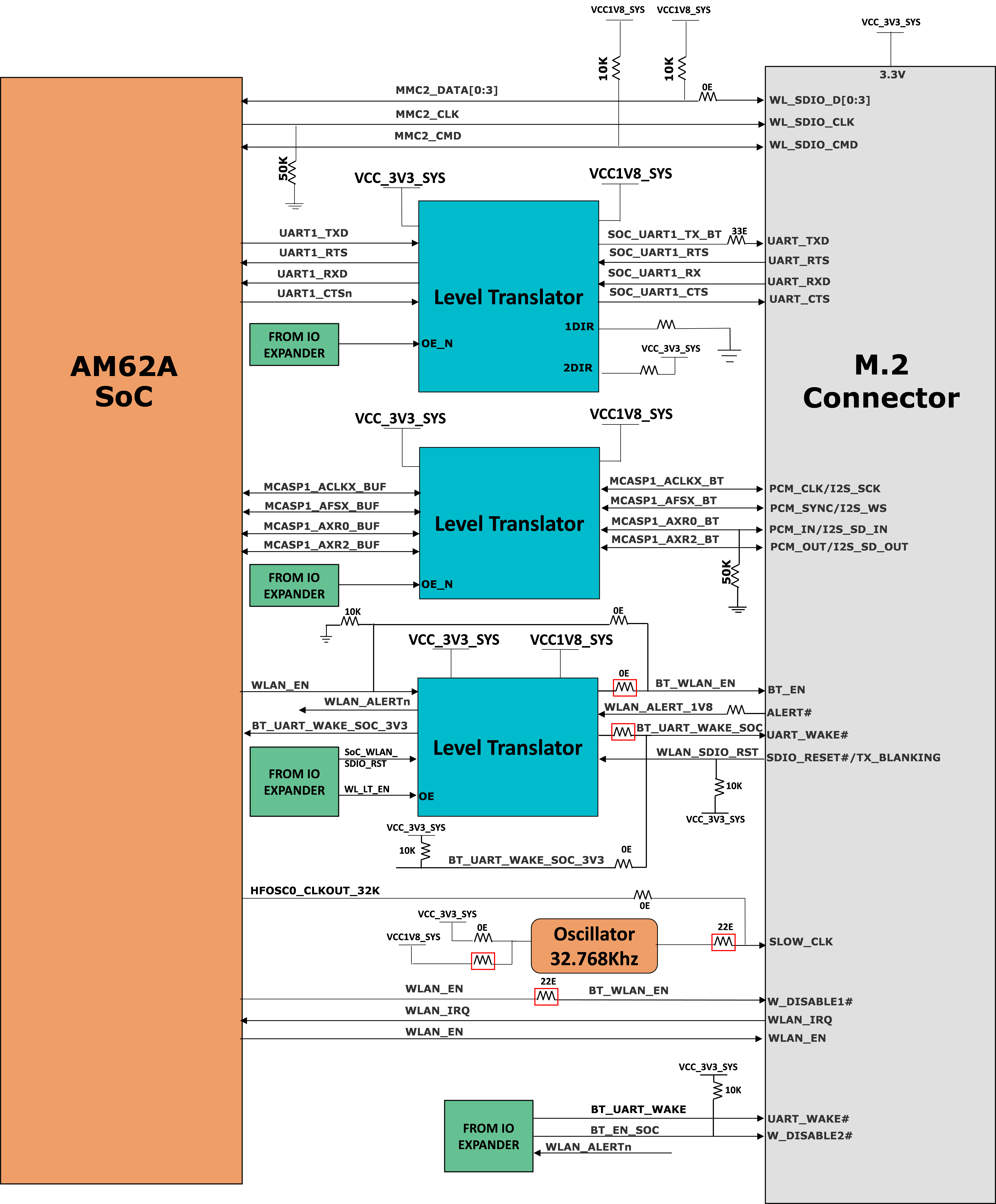SPRUJ66A February 2023 – December 2023
- 1
- Abstract
- Trademarks
- 1EVM Revisions and Assembly Variants
- 2Inside the Box
- 3EMC, EMI, and ESD Compliance
-
4System Description
- 4.1 Key Features
- 4.2 Functional Block Diagram
- 4.3 AM62A Low Power SK EVM Interface Mapping
- 4.4 Power ON/OFF Procedures
- 4.5
Peripheral and Major Component Description
- 4.5.1 Clocking
- 4.5.2 Reset
- 4.5.3 CSI Interface
- 4.5.4 Audio Codec Interface
- 4.5.5 HDMI Display Interface
- 4.5.6 JTAG Interface
- 4.5.7 Test Automation Header
- 4.5.8 UART Interface
- 4.5.9 USB Interface
- 4.5.10 Memory Interfaces
- 4.5.11 Ethernet Interface
- 4.5.12 GPIO Port Expander
- 4.5.13 GPIO Mapping
- 4.5.14 Power
- 4.5.15 AM62A Low Power SK EVM User Setup and Configuration
- 4.5.16 Expansion Headers
- 4.5.17 I2C Address Mapping
- 5Revision History
4.5.10.3.3 MMC2 - M.2 Key E Interface
AM62A Low Power SK EVM has a M.2 Key E interface for connecting WiFi BT modules connected to MMC2, UART2 instances and McASP1 interface through buffers. This can be used to interface with a Wi-Fi, dual-band, 2.4 and 5-GHz module with antennas supporting Industrial temperature grade. The M.2 is provided with 4- bit IO of the MMC2 interface supporting IEEE standard 802.11a/b/g/n data. The M.2 connector can be interfaced with modules that can offer high throughput and extended range along with Wi-Fi and Bluetooth coexistence for a power-optimized design.
The M.2 Connector is provided with a 3.3 V on board power supply to meet the power supply requirements of the interfacing modules. The MMC2 interface of the SOC is powered by the VDDSHV6 power domain, which is connected to 1.8V IO supply.
 Figure 4-24 M.2 Key E Interface block diagram
Figure 4-24 M.2 Key E Interface block diagram